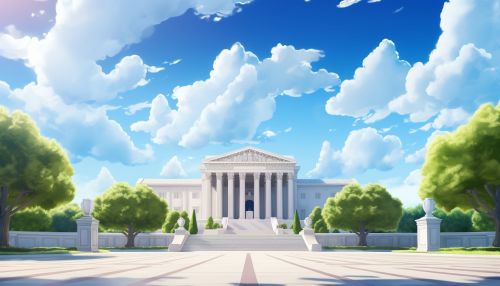Supreme Court of the United States
Overview
The Supreme Court of the United States (SCOTUS) is the highest court in the federal judiciary of the United States of America. Established pursuant to Article III of the United States Constitution in 1789, it has ultimate and largely discretionary appellate jurisdiction over all federal and state court cases that involve a point of federal law, and original jurisdiction over a narrow range of cases.


History
The Supreme Court was established by the Judiciary Act of 1789, which was signed into law by President George Washington. The Act set the number of Supreme Court justices at six: one Chief Justice and five Associate Justices. Over the years, Congress has adjusted the number of seats on the Supreme Court, ranging from five to ten, before settling at the current total of nine in 1869.
Structure
The Supreme Court consists of the Chief Justice of the United States and eight associate justices. Each justice has lifetime tenure, meaning they remain on the Court until they resign, retire, or die. This structure is intended to ensure judicial independence, a cornerstone of the American system of separation of powers.
Jurisdiction
The Supreme Court has both original and appellate jurisdiction. It has exclusive original jurisdiction over cases involving ambassadors and other diplomats, and those in which a state is a party. In all other cases, the Supreme Court has appellate jurisdiction. It can choose to hear or not hear such cases, and it hears a small percentage of the cases petitioned to it.
Procedure
The Supreme Court follows a procedure based on the federal court system. It hears cases argued in open court, but also decides some cases on the basis of the written record alone. Decisions of the Supreme Court, once made, are precedent that bind all lower courts.
Impact
The Supreme Court plays a crucial role in interpreting the Constitution and shaping the laws and policies of the United States. Its decisions can have far-reaching impacts on issues ranging from individual rights to the powers of government.
Criticism and Controversy
The Supreme Court has been the subject of criticism and controversy. Some critics argue that the Court has too much power, while others believe that it is too insulated from the democratic process. The process of nominating and confirming justices has also been contentious.
